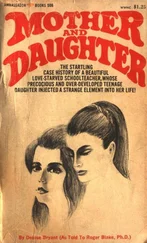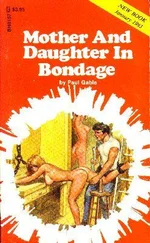The Vanderbilt fortune was made in transportation. Its origins lay in the first regular Staten Island ferry service to Manhattan, started by the Commodore in a periauger , under sail, while he was still in his teens. From there his career reads like a successful case study in a textbook for business students. He ploughed back the profits from his first periauger ferry service until he owned a fleet. He expanded into other waters and bought coasting schooners. Then, when others had taken the risk out of steamship technology, he sold his sailing ships and embraced the age of steam, founding the Dispatch Line and acquiring the nickname ‘Commodore’ as he built it up.
The Dispatch Line ran safer and faster steamships than any of its competitors to Albany up the Hudson, and along the New England coast as far as Boston up Long Island Sound disembarking at Norwalk, New Haven, Connecticut and Providence. Between 1829 and 1835, the Commodore moved easily into the role of capitalist entrepreneur, profiting from the impulse to move and explore as waves of immigrants fanned out and built a new country. By 1845 he began to appear on ‘rich lists.’ The Wealth and Biography of the Wealthy Citizens of New York City , compiled by Moses Yale Beach that year estimated his fortune at $1.2 million and added ‘of an old Dutch root, Cornelius has evinced more energy and go-aheaditiveness in building and driving steamboats and other projects than ever one single Dutchman possessed’ 5 . The size of the Commodore’s fortune is particularly remarkable when one considers that the word ‘millionaire’ was only coined by journalists in 1843 to describe the estate left by the first of them, the tobacconist Peter Lorillard. In 1845, the millionaire phenomenon was still so rare that the word was printed in italics and pronounced with rolling ‘rs’ in a flamboyant French accent. 6
It was only in the last quarter of his life, between the mid-1860s and his death in 1877, that the Commodore moved into railroads – the industry with which the Vanderbilts are usually associated (this came after an adventure in Nicaragua where he forced a steamship up the Greytown River to open a trans-American Gold Rush passage in 1850, fomented a civil war and took his bank account to $11 million by 1853). It took much to convince the Commodore that railroads were the future: 30,000 miles of railroad track had to be laid by others before he accepted that the argument was won. Once convinced, he divested himself of his steamships and began buying up railroads converging on New York in a spectacular series of stock manipulations or ‘corners’ at which he proved extremely inventive and adept. 7
The Commodore’s accounting methods may have been pre-industrial – he kept his accounts either in an old cigar box or in his head – but the enterprise he created made him a pioneer of industrial capitalism. He was also a master of timing. The American Civil War (1861–65) confirmed the absolute dominance of the railways at the heart of the growing US economy. On 20 May 1869, he secured the right to consolidate all his railroads into the New York Central, and recapitalised the stock at almost twice its previous market value. He was much abused for inventing the practice of issuing extra stock capitalised against future earnings, or ‘watering’ as it was known, but the practice has since become not only standard practice but a key instrument of modern finance. 8
The first version of Grand Central Terminal in New York, which opened in 1871, had serious design flaws, rather like the Commodore himself. Blithely ignoring the impact on the local community, trains ran down the middle of neighbouring streets and passengers wishing to change lines had to dodge moving locomotives and dive across the tracks in all weather conditions (in old age it amused the Commodore to play ‘chicken’ in front of oncoming trains). But this was the first American railroad terminal and it encapsulated an extraordinary achievement. ‘A powerful image in American letters,’ writes the historian Kurt Schlichting, ‘depicts a youth moving from a rural farm or small town to the big city, seeking fame or fortune … As the train arrives, the protagonist confronts the energy and chaos of the new urban society … Great railroad terminals like Grand Central provided the stage for this unfolding drama, as a rural, agrarian society urbanized.’ 9 In constructing the first version of the Grand Central Terminal (his statue still stands outside the 1913 version), the Commodore constructed a metaphor for both his own life and the industrialisation of America.
That, at any rate, was the business history, the journey from ferryman to railroad king which his first biographer, William Croffut, believed should be held up as an inspiring example to the young. This is not the whole truth, however. He may have been a great entrepreneur, but the Commodore had some disconcerting domestic habits. He is alleged to have consigned his wife, Sophia, and his epileptic son, Cornelius Jeremiah, to a lunatic asylum when they stood up to him; he was rumoured to be a womaniser, especially with the notorious Claflin sisters who were eventually prosecuted for obscenity (though not with him); and he dabbled in spiritualism for advance news from the spirit world on stock prices. There were many who objected to his meanness, for his habit of Dutch frugality was steadfastly extended to anything approaching a philanthropic gesture until very close to his death. ‘Go and surprise the whole country by doing something right,’ wrote Mark Twain in despair in 1869. 10 New York society preferred to keep him at a distance too. There was, it was felt, altogether too much of the farmyard about him. He was even rumoured to have spat out tobacco plugs on Mrs Van Rensselaer’s carpet.
Alva later wrote that the Commodore was a charming old man. She came to know him in the last three years of his life, understood that he was a visionary and refused to be cowed by him which he always liked. 11 He was certainly forthright, as a love letter he penned to the young woman who would become his second wife demonstrated: ‘I hope you will continue to improve for all time,’ he wrote after she had been ill. ‘Until you turn the scale when 125 pounds is on the opposite balance. This is weight enough for your beautiful figure.’ 12 It may be untrue that the Commodore spat out tobacco plugs, but he was not the only industrial tycoon unwilling to tone down a forceful style for genteel drawing rooms. Occasionally he was gripped by the urge to show off to snootier members of New York society but even this lacked conviction. In 1853 he commissioned the largest ocean-going yacht the world had ever seen, the North Star , and took his first wife and family to Europe. But though they were greeted by grand dukes, sculpted by Hiram Powers and painted by Joel Tanner Hart, he sold the yacht to the United Mail when he went home, never repeated the experiment and returned to what he enjoyed most, which was making money and doing down his competitors.
Unsurprisingly, the Commodore’s wealth inspired great jealousy as well as admiration. Some of the stories about his coarse behaviour came from his aforementioned competitors, and from embittered members of his own family contesting his will; he may also have played up to his image as a farmyard peasant when it suited him. Whatever the explanation, Frank Crowinshield could still write in 1941: ‘The most persistent myth concerning the family was that they were all, if not boors exactly, at any rate unused to the social amenities. The myth was so pervasive that one may still hear it from the lips of decrepit New Yorkers who, in discreet whispers, recite the risks their fathers ran in crossing the portals … Such people still speak as though their sires had risked calling upon Attila, or visiting, without benefit of axe or bludgeon, the dread caves of the anthropophagi.’ 13
Читать дальше












